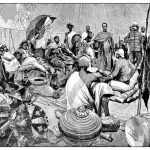The college says its scheme will address the rural workforce shortage and declining interest in general practice.
The revamped Australian General Practice Training scheme will focus on centralising services and addressing the rural workforce shortage, the RACGP revealed in a position statement released today.
While it was announced in 2017 that the AGPT will be brought back under college control, and Regional Training Organisations’ funding has only been extended to 2023, very few details have been released until now.
General Practice Supervisors Australia President Dr Nicole Higgins told TMR last week that further detail had been long-awaited, especially for incoming registrars.
“If people are unsure or don’t know what’s going to happen in GP training, it’s going to have an impact on the numbers of training,” she said.
“It’s going to impact, for example, state emergency departments because if there’s a reduced number of doctors training in certain communities it’s a huge flow on effect.”
According to the college’s statement, it will create a service hierarchy, with one national team at the top, 16 regional teams in the middle and about 70 local teams at the bottom.
This structure, according to the RACGP, will allow for localised service delivery without double-handling.
“Where local contextualisation is not required, this education will be developed through a centralised RACGP capability, in contrast to the current distributed and duplicated arrangements inherent in the regional delineation of RTOs,” the RACGP wrote.
“Central and local delivery will be applied according to the mode of education and the need for localisation; for example, online learning modules will be delivered centrally and group peer learning will be delivered locally, while Aboriginal and Torres Strait Islander health learning will largely be delivered locally.”
As previously reported by TMR, RTOs have only had their funding extended to semester one of 2023, which some sources at the time said indicated a three-year execution timeline for the RTOs.
Another facet of the RACGP’s plan involves launching RACGP Service, a program which will recruit college members in underserved communities and pair them with a registrar, with the college member effectively becoming the paired registrar’s supervisor.
According to the college, this will allow for more rural placements, help create more “challenging” training locations and assist in attracting registrars.
“RACGP Service placements could also provide an opportunity for a medical student, intern or resident medical officer (RMO) (or combination thereof) to accompany the supervisor, creating a vertical learning experience while delivering significant additional service capacity,” the college wrote.
“Connection with the community would be established early in the training pipeline and, together with ongoing case management and mentorship, lead to long-term retention.
“The supervisor–registrar combination and their matching to a community is key to the success of the RACGP Service as a training, service delivery and retention strategy.”
The college claims they will be able, for the most part, to fund their proposed model within the existing AGPT budget.





